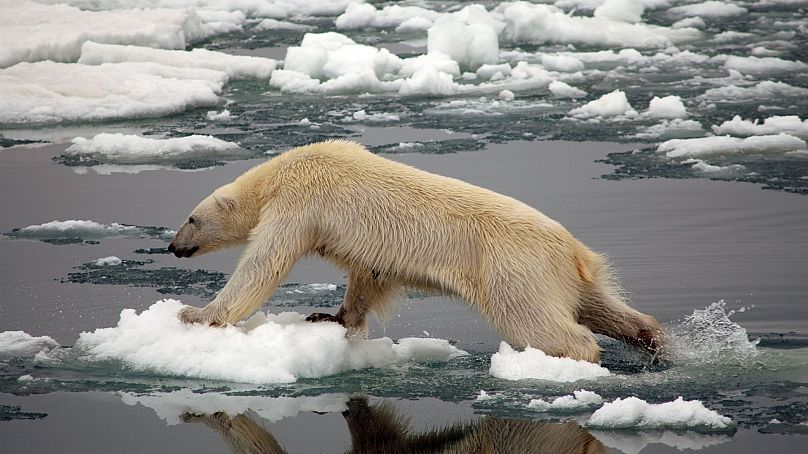A White House report confirms that the US is open to researching solar radiation modification, or sun blocking.
It sounds like something out of a sci-fi novel, but some researchers want to cool the earth by reflecting sunlight back into space.
The outlandish idea is currently trending, after the US voiced interested in studying 'solar radiation modification' (SRM) as a possibility, according to a White House report last week.
Advocates claim it could reduce the devastating impacts of climate change, and even refreeze the poles.
"SRM offers the possibility of cooling the planet significantly on a timescale of a few years," the report states.
Earlier in the year, several news outlets also reported that the United Nations are keen to ‘explore’ it.
But just how viable really is sun-blocking technology - and what have the United Nations actually said?
How could blocking the sun stop climate change?
'Sun blocking' technologies - also known as 'solar radiation modification' - could theoretically cool down the earth by reflecting sunlight back into space.
One idea involves pumping sun-blocking particles into the upper atmosphere. This process of 'stratospheric aerosol injection' would involve planes spraying an aerosol like sulfur dioxide into the stratosphere.
This mist of particles would reflect the sun back upwards, shading the earth. The method has already worked - albeit accidentally. When Mount Pinatubo in the Philippines erupted in 1991, it released thousands of tons of sulphur dioxide. The global temperature temporarily dropped by 0.5°C.
In September 2022, researchers at Yale university argued that the injection method could hypothetically refreeze the poles.
Are the US and UN keen to explore this technology?
A White House report published last Friday confirms that the US is open to researching SRM.
"A programme of research into the scientific and societal implications of solar radiation modification (SRM) would enable better-informed decisions about the potential risks and benefits of SRM as a component of climate policy, alongside the foundational elements of greenhouse gas emissions mitigation and adaptation," it says.
However, the report also clarifies that no decision has been made to "establish a comprehensive research programme focused on solar radiation modification."
In February, several news outlets are reporting that the UN wants to 'explore' this technique.
This could give the impression that the organisation has approved sun blocking as a viable tool to fight climate change.
Unfortunately for tech enthusiasts, this is not the case.
The UN Environmental Program's recent report into SRM concludes that it is not currently a realistic or wise plan.
"UNEP concurs with the panel that, at present, large-scale, or operational deployment of SRM technologies is not necessary, viable, prudent or sufficiently safe, given the limited scientific understanding and uncertainty about the potential impacts and unintended consequences," says UNEP’s Chief Scientist Andrea Hinwood.
"The review concludes that SRM cannot replace reducing greenhouse gas emissions."
Nonetheless, the body doesn't rule out the method altogether, with the report concluding that their assessment of the technique "may change should climate action remain insufficient".
What does the research on sun-blocking show?
Research into the sun-blocking technique has yielded mixed results. Even its passionate advocates usually call for a reduction in global emissions first.
The Yale report outlined a hypothetical plan to “turn the global thermostat”, according to lead author Wake Smith.
If their plan was implemented, 125 high-flying jets would periodically spray the particles into the atmosphere at latitudes of 60 degrees north and south - roughly around Northern Alaska and the southern tip of Patagonia.
The particles would slowly drift towards the poles, cooling the earth below by 2 degrees Celsius.
The authors suggest that there is “potential global benefit” in their plan, which would cost around $11 billion (€11.3 billion).
“There is widespread and sensible trepidation about deploying aerosols to cool the planet,” Smith says.
“But if the risk/benefit equation were to pay off anywhere, it would be at the poles.”
But the plan poses other potential problems.
It would require 175,000 particle-spraying flights per year, which would release millions of tonnes of greenhouse gases into the air.
To address climate change, the world must rapidly reduce its reliance on fossil fuels, Smith warns.
“Game changing though this could be in a rapidly warming world, stratospheric aerosol injections merely treat a symptom of climate change but not the underlying disease,” he says.
“It’s aspirin, not penicillin. It’s not a substitute for decarbonization.”












